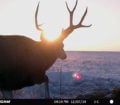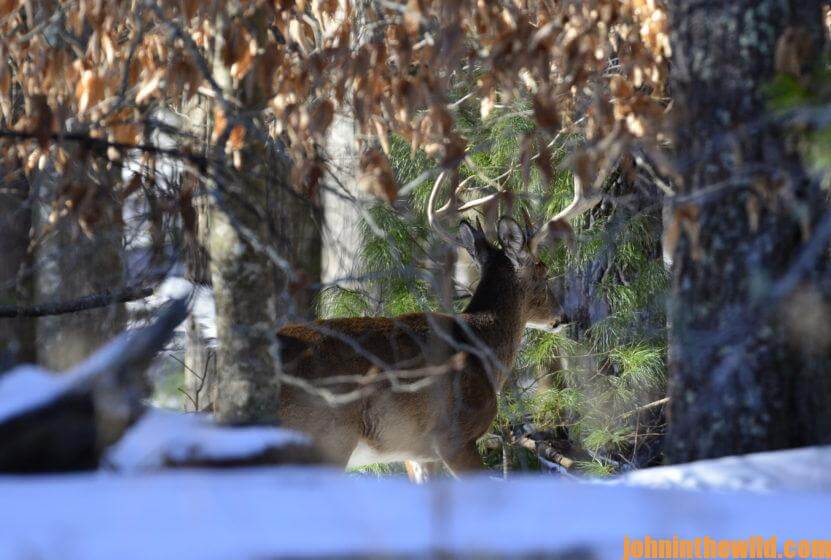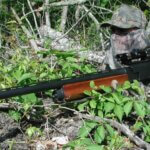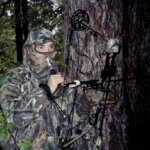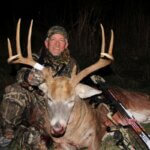Editor’s Note: Many deer hunters today are exploring shooting muzzleloaders like their ancestors did to hunt deer. You need to check the state’s regulations where you plan to hunt, because the rules vary from state to state. Some states offer muzzleloading-only seasons or allow muzzleloading during their primitive weapons’ seasons. Some states that don’t allow muzzleloading still may allow muzzleloading for various big-game species on specific WMAs. Some states have specific rules governing the use of pelletized powders, scopes, large pistol reloading primer, sabot and enclosed ignition. Arizona is considered one of the most relaxed states for muzzleloading laws. Consider muzzleloader hunting for deer to enjoy yet another facet of the outdoors.
A flash of ivory-colored antler reflected the light and caused the long prong to glow as though it was illuminated by a fluorescent light. The hunter in the dense cover held his gun braced on his knee as he sat against the heavily-leaved water oak. “One more step,” the hunter thought. “If that buck will just walk a little bit further into the clearing, I’ve got him.” Time moved slowly. But as the rays of the su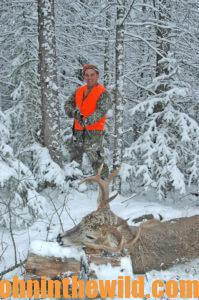 n began to lick the dew from the red, golden and bronze leaves, the big buck showed his shoulder at 30 yards. The rifle cracked, and smoke filled the air. Through the cloud of gray, spent powder, the woodsman saw the buck stagger and fall.
n began to lick the dew from the red, golden and bronze leaves, the big buck showed his shoulder at 30 yards. The rifle cracked, and smoke filled the air. Through the cloud of gray, spent powder, the woodsman saw the buck stagger and fall.
The big 8-point buck was the prize of a lifetime as a trophy taken with a primitive firearm should be. However, too often many of us fail to pay the price to bag the big bucks. The men who consistently bag trophy deer are specialists. They are the elite of our hunting fraternity. Most of them have learned how to out-hunt the other hunters as well as how to unravel the mysteries of the trophy buck.
The trophy blackpowder deer hunter will spend as much time studying the pressure exerted on the deer by other hunters as he will learning the haunts of the big bucks, because both are intricately related. For a deer to become a trophy buck, he has to be able to survive more than two seasons. To do that in many areas that are heavily hunted by primitive-weapon sportsmen, the deer must learn what the hunter does when he comes into the woods.
Let’s consider the different types of primitive firearms hunters use, what they do, and when they do it. First there’s the tenderfoot who sees blackpowder hunting as a method of getting into the woods and possibly taking a deer before other outdoorsmen are permitted to hunt. Or, he may be interested in extending his season through the use of primitive weapons. Perhaps he wants to be able to bag a deer, any deer, during the season. And, a primitive hunt may afford him that opportunity. Those sportsmen are looking for any deer they can take that will walk into their gunsights. This group probably makes up the majority of blackpowder hunters on any given blackpowder hunt on public lands.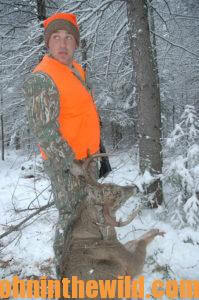
The second type of blackpowder shooter may be classified as a woodsman. This hunter is a successful gun hunter or bowhunter. He has taken his share of whitetails and is looking for a greater challenge by hunting with black powder. He may take a doe, but primarily he is a buck hunter.
To learn more about hunting deer with black powder, check out John E. Phillips’ book, available in Kindle, print and Audible versions, “How to Hunt Deer Up Close: With Bows, Rifles, Muzzleloaders and Crossbows” (http://amzn.to/11dJRu8).
Tomorrow: More Kinds of 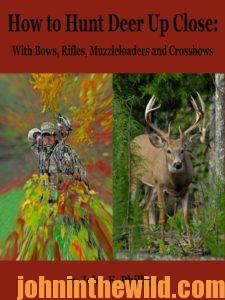 Blackpowder Deer Hunters
Blackpowder Deer Hunters


